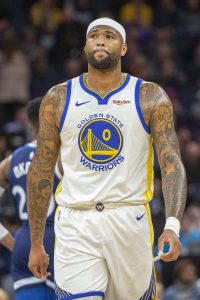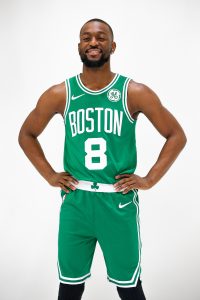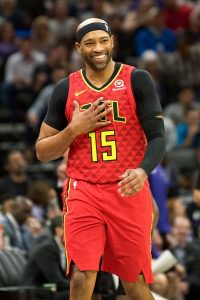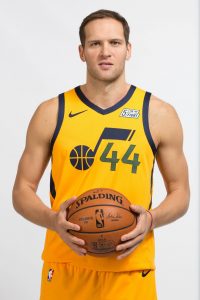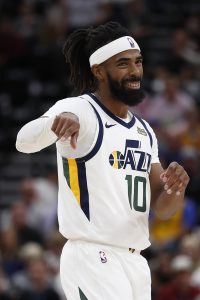Hoops Rumors is breaking down the 2019 offseason for all 30 NBA teams, revisiting the summer’s free agent signings, trades, draft picks, departures, and more. We’ll evaluate each team’s moves from the last several months and look ahead to what the 2019/20 season holds for all 30 franchises. Today, we’re focusing on the Philadelphia 76ers.
Signings:
- Standard contracts:
 Tobias Harris: Five years, $180MM. Includes trade kicker of 5% or $5MM (whichever is lesser). Re-signed using Bird rights.
Tobias Harris: Five years, $180MM. Includes trade kicker of 5% or $5MM (whichever is lesser). Re-signed using Bird rights.- Al Horford: Four years, $109MM. Fourth year partially guaranteed ($14.5MM). Signed using cap room.
- Note: Horford’s fourth-year partial guarantee can increase to $19.5MM (if Sixers make Finals in 2020, 2021, or 2022) or can fully guarantee to $26.5MM (if Sixers win Finals in 2020, 2021, or 2022).
- Mike Scott: Two years, $9.77MM. Signed using room exception.
- Shake Milton: Four years, minimum salary. Fourth-year team option. Converted from two-way contract to standard contract using cap room.
- James Ennis: Two years, minimum salary. Second-year player option. Re-signed using minimum salary exception.
- Furkan Korkmaz: Two years, minimum salary. Second year non-guaranteed. Re-signed using minimum salary exception.
- Raul Neto: One year, minimum salary. Signed using minimum salary exception.
- Kyle O’Quinn: One year, minimum salary. Signed using minimum salary exception.
- Trey Burke: One year, minimum salary. Partially guaranteed ($405K). Signed using minimum salary exception.
- Note: Guarantee increased to $810K at start of regular season.
- Two-way contracts:
- Non-guaranteed camp contracts:
- Shizz Alston Jr.: One year, minimum salary (Waived).
- Jared Brownridge: One year, minimum salary (Waived).
- Terry Harris: One year, minimum salary (Waived).
- Haywood Highsmith: One year, minimum salary (Waived).
- Christ Koumadje: One year, minimum salary (Waived).
- Isaiah Miles: One year, minimum salary (Waived).
- Xavier Munford: One year, minimum salary (Waived).
- Julian Washburn: One year, minimum salary (Waived).
Trades:
- Acquired the draft rights to Matisse Thybulle (No. 20 pick) from the Celtics in exchange for the draft rights to Ty Jerome (No. 24 pick) and Carsen Edwards (No. 33 pick).
- Acquired cash ($2MM) from the Wizards in exchange for Jonathon Simmons and the draft rights to Admiral Schofield (No. 42 pick).
- Acquired Josh Richardson in a four-team trade with the Heat, Clippers, and Trail Blazers in exchange for Jimmy Butler (sign-and-trade; to Heat) and the draft rights to Mathias Lessort (to Clippers).
- Acquired the draft rights to Jordan Bone (No. 57 pick), the Hawks’ 2020 second-round pick (56-60 protected), and either the Hawks’, Hornets’, or Nets’ 2023 second-round pick (whichever is most favorable) from the Hawks in exchange for the draft rights to Bruno Fernando (No. 34 pick).
- Acquired the Heat’s 2024 second-round pick (top-55 protected) and cash ($2MM) from the Pistons in exchange for the draft rights to Jordan Bone (No. 57 pick).
Draft picks:
- 1-20: Matisse Thybulle — Signed to rookie contract.
- 2-54: Marial Shayok — Signed to two-way contract.
Contract extensions:
- Ben Simmons: Five years, 25% maximum salary. Projected value of $168,200,000. Starting salary can be worth up to 30% of the cap if Simmons earns All-NBA honors in 2020 (full details). Includes 15% trade kicker. Starts in 2020/21; runs through 2024/25.
Departing players:
- Jimmy Butler
- Haywood Highsmith (two-way; waived)
- Amir Johnson
- Boban Marjanovic
- T.J. McConnell
- Greg Monroe
- J.J. Redick
- Jonathon Simmons
Other offseason news:
- Lost lead assistant coach Monty Williams to Suns; hired Ime Udoka as lead assistant coach.
- Hired Roy Hibbert as player development coach.
- Renounced 2017 first-round pick Anzejs Pasecniks.
- Minority stakeholder David Heller no longer part of ownership group.
- Exercised 2020/21 rookie scale option on Zhaire Smith.
Salary cap situation:
- Used cap space; now over the cap.
- Carrying approximately $128.39MM in salary.
- No cap exceptions available.
Story of the summer:
No team had a more crushing end to its 2018/19 campaign than the Sixers, who would have forced overtime and been in position to eke out a second-round series win over the Raptors if Kawhi Leonard‘s miracle Game 7 buzzer-beater hadn’t dropped in after bouncing four times on the rim.
As heartbreaking as that finish was for Philadelphia, the team had to be encouraged by the Raptors’ subsequent wins over the Bucks in the Eastern Finals and the Warriors in the NBA Finals. Neither of those teams forced Toronto to a seventh game, meaning it was Philadelphia that actually gave the eventual champs their biggest scare.
The Sixers appeared to take that silver lining to heart. Rather than buying into theories that the Ben Simmons/Joel Embiid pairing might not work in the long run, the team doubled down on that duo, signing Simmons to a five-year, maximum-salary contract extension. And despite some disappointing postseason showings from Tobias Harris, the 76ers heavily invested in the veteran forward, re-signing him to a five-year, $180MM deal.
Philadelphia likely would’ve been willing to run it back to an even greater degree by retaining Jimmy Butler, but he decided he wanted to head to South Beach, choosing the Heat in free agency. Fortunately for the Sixers, Miami didn’t have the cap room necessary to sign Butler outright and had to cooperate on a sign-and-trade, giving the 76ers the leverage to acquire Josh Richardson in the process.
Then, rather than bringing back sharpshooter and floor-spacer J.J. Redick, the Sixers opted to use their newly-opened cap room to bring aboard Al Horford, a veteran capable of either playing alongside Embiid or stabilizing the team’s defense when the All-NBA center is off the floor.
With Richardson and Horford replacing Butler and Redick in the starting lineup, the 76ers lost a little outside shooting and play-making, but potentially made a strong defense even stronger.
Philadelphia’s size flummoxed just about every Raptors player not named Kawhi Leonard during the Eastern Conference Semifinals, and this year’s starting five – Simmons, Richardson, Harris, Horford, and Embiid – is even bigger. After just missing out on a deep postseason run in 2018/19, the Sixers have gone all-in on their biggest strength for 2019/20.
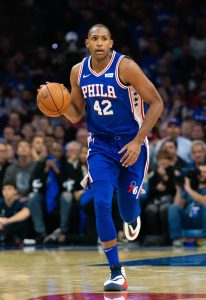 The Sixers’ signing of Horford made sense for both the team and the player. For Horford, joining the 76ers represented a chance to contend for a title, maximize his earnings, and see more time at power forward, his preferred position. For Philadelphia, it meant securing an insurance policy for Embiid.
The Sixers’ signing of Horford made sense for both the team and the player. For Horford, joining the 76ers represented a chance to contend for a title, maximize his earnings, and see more time at power forward, his preferred position. For Philadelphia, it meant securing an insurance policy for Embiid.
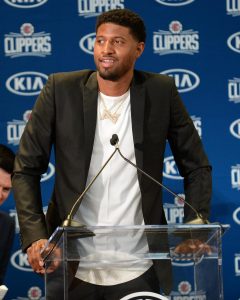 George had been a five-time All-Star prior to 2018/19, but his sixth All-Star season was probably his best yet. He finished third in MVP voting after averaging a career-high 28.0 PPG to go along with 8.2 RPG, 4.1 APG, and a league-leading 2.2 SPG. As
George had been a five-time All-Star prior to 2018/19, but his sixth All-Star season was probably his best yet. He finished third in MVP voting after averaging a career-high 28.0 PPG to go along with 8.2 RPG, 4.1 APG, and a league-leading 2.2 SPG. As 